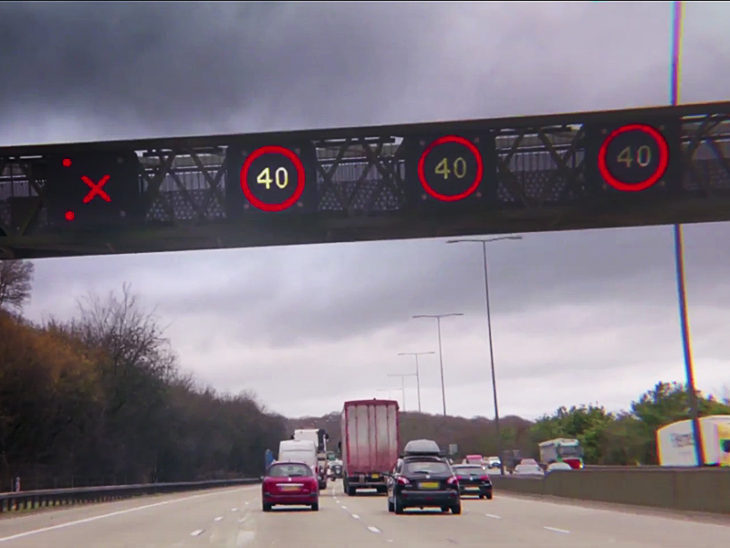Smart motorways are to come under a government review as concerns over driver safety continue to mount.
Transport Secretary Grant Shapps announced the review this morning, saying “we know people are dying on smart motorways”.
He added: “The House I know is very concerned about smart motorways.
“I’ve heard those concerns raised today and previously and I have asked my department to carry out at pace an evidence stocktake to gather the facts quickly and make recommendations.”
His announcement follows yesterday’s Transport Committee session, which explored the work of Highways England and concerns around smart motorways, and saw Highways England chief executive Jim O’Sullivan say smart motorways are “too complicated” for drivers.
The review has been welcomed by motoring and road safety organisations that continue to have concerns over hard shoulder running motorways, which call up the hard shoulder as an active lane in times of need, and All-Lane Running schemes, where the hard shoulder is permanently converted to an operational lane.
Last week saw the AA publish data indicating that seven out of 10 drivers (71%) say All Lane Running (ALR) motorway schemes feel more dangerous than a traditional motorway as it called for a review. A study by the AA of more than 15,000 drivers also found around half (48%) said they strongly believed ALR schemes felt more dangerous while only one in 10 feel safer using such schemes.
And following five deaths along the same stretch of the M1, more than half (52%) of drivers said they believed the rollout of ALR schemes should be stopped.
However, Highways England refuted the AA’s findings, saying that feedback from road users show a clear majority feel confident driving on a smart motorway, and that they are safer and improve journey times.
And earlier this week Highways England revealed that drivers stopping without good reason are the main cause of crashes on the motorway.
It also said there were 77 deaths on traditional roads with a hard shoulder compared to nine on the smart network in 2018.
Yet, indicating the issues with statistics, AA analysis published two months ago of a Highways England document suggested that drivers breaking down in a live lane on an all-lane running (ALR) motorway face significantly higher dangers compared to a traditional motorway with a continuous hard shoulder. The report also shows it takes Highways England more than 17 minutes to spot a broken-down vehicle in a live lane on an All-Lane Running motorway when Stationary Vehicle Detection (SVD) systems are not in place.
Welcoming Grant Shapps’ announcement today, Edmund King, AA president, said: “We trust that the review will not get overtaken by misleading or partial statistical analysis about what type of road is safer but will concentrate on avoidable deaths. We know there are real situations where lives would have saved if drivers on smart motorways had somewhere safe to stop. We owe it to all drivers to give them a safe harbour to stop if their vehicle develops problems.”
The AA also called for further rollouts of smart motorways to be stopped unless more Emergency Refuge Areas are planned and retrofitted.
The RAC also called for a rethink on Emergency Refuge Areas, as well as for stopped vehicle detection technology to be rolled out on all sections. Head of roads policy Nicholas Lyes said: “We know from our own research that drivers feel the permanent removal of the hard shoulder compromises safety. They also tell us that emergency SOS areas are located too far apart at intervals of up to 1.6 miles.
“While it’s important that we increase capacity on our motorway network, this should only be done using the safest design features and the latest technology which has sadly only been the case on a fraction of smart motorways. Drivers must have confidence that they will be protected from traffic in the event they suffer a breakdown in live lane, particularly where the hard shoulder has been permanently removed.
“We reiterate our calls for the latest stopped vehicle detection technology to be retrofitted on all sections of smart motorway as a matter of urgency and for more SOS areas to be built so drivers are never more than a mile away from one. These measures should also be included in all smart motorway schemes that are currently being built or planned.”











































